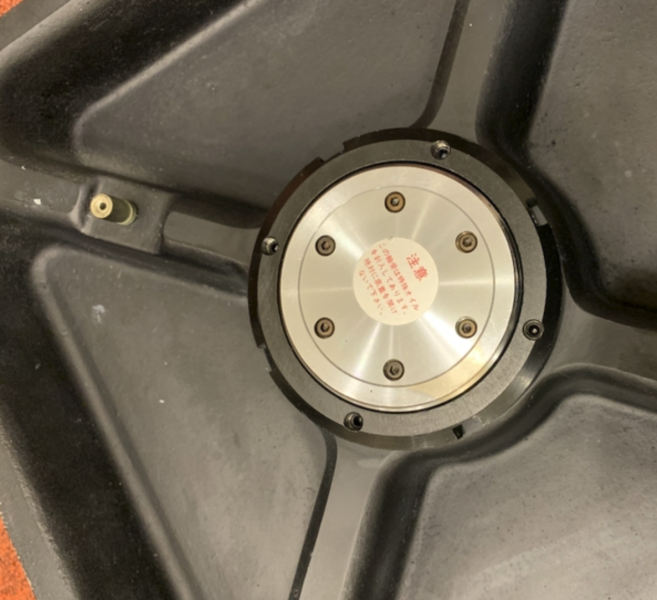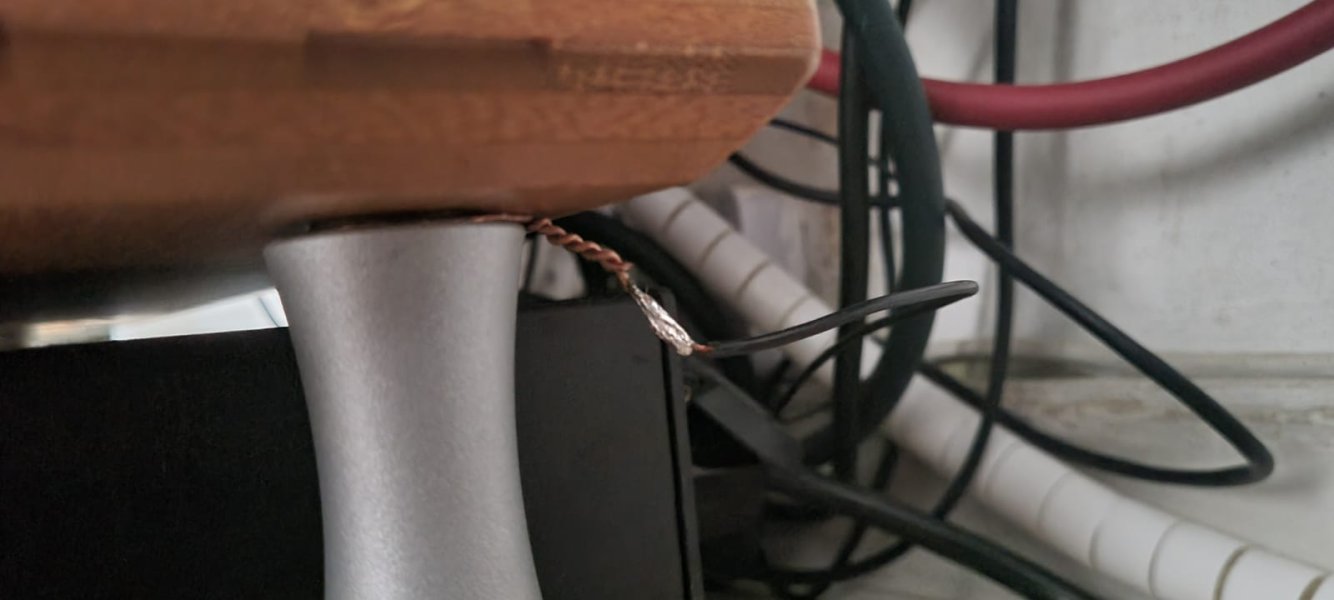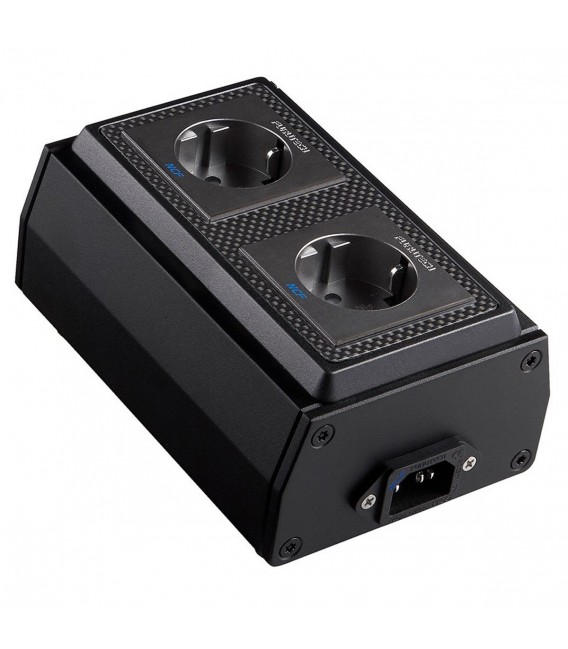Audio Note Kondo IO-XP cartridge
- Thread starter Birdwatcher
- Start date
You are using an out of date browser. It may not display this or other websites correctly.
You should upgrade or use an alternative browser.
You should upgrade or use an alternative browser.
Thank you @mtemurCongratulations.
IME SFz doesn’t like to be placed over another component. It performs best over its own feet on the rack. BTW it (SFz) should be set to balanced unless you’re experiencing a hum problem that you cannot solve.
The Weiss is turned off when i play vinyl.
Why balanced and not 1.5 ?
*edit
Never mind .. Read the

SFz MC step-up transformer | AUDIO NOTE
Last edited:
Too early to say,@Juiced how does it sound?
still fine tuning it.
- Unlike the Zyx u-ex100 which sounds best with sme s2 headshell.
the io-xp sound better with a much heavier headshell (ortofon lh-9000).
- switching back and forward between SME original tonearm cable and Kondo ls-41.
for now i'm sticking to the sme tonearm cable.
the io-xp is more nuanced but nothing jaw dropping.
It doesn't matter whether Weiss is turned on or off. SFz sounds better on its own feet sitting on the rack.Thank you @mtemur
The Weiss is turned off when i play vinyl.
MC cartridges are inherently balanced sources, which is why using the SFz in balanced mode provides the best performance—and is actually the standard operating mode.Why balanced and not 1.5 ?
*edit
Never mind .. Read the

SFz MC step-up transformer | AUDIO NOTE
www.audionote.co.jp
As stated on the page you linked:
“When there is no hum observed, use this unit at Balanced position for wider and deeper sound stage.”
Other options are for eliminating hum but switches the SUT into unbalanced mode, which doesn’t sound as good as balanced.
IO-XP doesn't sound as lively as IO-M. Personal preferences play a role.
I’ve found the IO-m to sound very natural and with great instrument timbre and textures. It does not exaggerate anything.
It’s not a WOW cartridge. That’s why I like it, it creates music not sound effects.
From my experience with Zyx, they are more on the Wow factor, they have very open high frequencies but less accurate on the timbre and textures.
YMMV
P.S. I would place the Kondo SUT as far as I can from the phonostage.
Make sure you ground it on both directions.
Try grouding it to the TT as well.
The IO-m is an extremely sensitive cartridge, due to its low output and low impedance.
It’s not a WOW cartridge. That’s why I like it, it creates music not sound effects.
From my experience with Zyx, they are more on the Wow factor, they have very open high frequencies but less accurate on the timbre and textures.
YMMV
P.S. I would place the Kondo SUT as far as I can from the phonostage.
Make sure you ground it on both directions.
Try grouding it to the TT as well.
The IO-m is an extremely sensitive cartridge, due to its low output and low impedance.
With the Kondo LS-41 interconnects, the hum is only audible if I turn the volume knob all the way up, which is not feasible.“When there is no hum observed, use this unit at Balanced position for wider and deeper sound stage.”
In normal or extremely loud listening, the hum is not audible at all.
It appears that in "balanced" mode, the entire length of the cartridge-to-SUT interconnect is much more susceptible to EMF.
So I'm guessing this is normal and I can leave it on balance..
What does Kondo mean by:
"use a 2-conductor type shielded phono cable"
"Please note that Balanced mode is not available with a turntable wherein shielded section is grounded."
I need illustrations to better understand
That’s alright IMOWith the Kondo LS-41 interconnects, the hum is only audible if I turn the volume knob all the way up, which is not feasible.
In normal or extremely loud listening, the hum is not audible at all.
Certainly the other way around.It appears that in "balanced" mode, the entire length of the cartridge-to-SUT interconnect is much more susceptible to EMF.
You’re right, balance is the normal operation mode of the SFz SUT.So I'm guessing this is normal and I can leave it on balance..
There’s actually an illustration of this on the Kondo website.What does Kondo mean by:
"use a 2-conductor type shielded phono cable"
"Please note that Balanced mode is not available with a turntable wherein shielded section is grounded."
I need illustrations to better understand
It means that a regular tonearm cable with RCA terminations is required, but the negative conductor should not be connected to the shielding. A separate ground conductor should also be present. Additionally, the negative conductor should be the same type as the positive conductor, which is the case with most tonearm cables.
If the negative conductor (blue or green pins) is connected to ground, balanced mode will not be possible.
yes i see it but can't read (yet) schematicsThere’s actually an illustration of this on the Kondo website.
It means that a regular tonearm cable with RCA terminations is required, but the negative conductor should not be connected to the shielding. A separate ground conductor should also be present. Additionally, the negative conductor should be the same type as the positive conductor, which is the case with most tonearm cables.
If the negative conductor (blue or green pins) is connected to ground, balanced mode will not be possible.

my ground connection setup, let me know if it’s ok :
sme 3012r >> kondo ls-41 rca-rca cable (no ground) >> kondo sfz

kondo sfz >> built-in ls-41+ground cable >> ear 88pb phono input and ground

micro seiki rx-5000air base ground >> ground cable >> ear 88pb second ground


The schematic shows the difference between balanced and unbalanced configurations. In unbalanced mode, set via the front selector, the negative signal is tied to ground. In balanced mode, the circuit uses the voltage difference between the positive and negative signals.yes i see it but can't read (yet) schematics
View attachment 156323
my ground connection setup, let me know if it’s ok :
sme 3012r >> kondo ls-41 rca-rca cable (no ground) >> kondo sfz
View attachment 156324
kondo sfz >> built-in ls-41+ground cable >> ear 88pb phono input and ground
View attachment 156325
micro seiki rx-5000air base ground >> ground cable >> ear 88pb second ground
View attachment 156326 View attachment 156327
More importantly, your ground connection is incorrect and is likely causing a ground loop.

In order to fix it:
- You should run a copper wire between the tonearm and the SUT ground taps indicated by the green line.
- The SUT’s ground wire is already correctly connected to the phono stage, and it should stay there.
- The ground wire from the turntable base/plinth is, in my opinion, unnecessary, since it will already be grounded through the tonearm ground wire—at least in setups where the armboards are metal. This is the case with the Air Force III Premium and the Kondo SFz. If grounding the plinth ever becomes necessary, the ground wire should be connected to the SFz SUT’s ground lug.
Side note: You should definitely remove the plastic caps indicated by the yellow arrows—they degrade the sound. Don’t forget to remove the ones on the amplifier as well.
Done.The schematic shows the difference between balanced and unbalanced configurations. In unbalanced mode, set via the front selector, the negative signal is tied to ground. In balanced mode, the circuit uses the voltage difference between the positive and negative signals.
More importantly, your ground connection is incorrect and is likely causing a ground loop.
View attachment 156333
In order to fix it:
- You should run a copper wire between the tonearm and the SUT ground taps indicated by the green line.
- The SUT’s ground wire is already correctly connected to the phono stage, and it should stay there.
- The ground wire from the turntable base/plinth is, in my opinion, unnecessary, since it will already be grounded through the tonearm ground wire—at least in setups where the armboards are metal. This is the case with the Air Force III Premium and the Kondo SFz. If grounding the plinth ever becomes necessary, the ground wire should be connected to the SFz SUT’s ground lug.
Side note: You should definitely remove the plastic caps indicated by the yellow arrows—they degrade the sound. Don’t forget to remove the ones on the amplifier as well.
Discovered something interesting
Connected the ground cable from the turntable plinth to a specific leg of the stand, and it lowered the hum more in balanced mode!
It only had an effect on a specific leg, which now acts and reacts like a ground rod.
It probably has something to do with the proximity to the tonearm cable.

You are probably right.maybe you should use a grounding wire as thick as possible, at least 1mm², it will have a lower resistance for the small voltage differences with grounding issues.
I'll test it, see if I get better results.
I'm using a short steel wire from the VDH The-ISIS cable
With kondo sfz set to "balanced” .maybe you should use a grounding wire as thick as possible, at least 1mm², it will have a lower resistance for the small voltage differences with grounding issues.

and for some odd reason the stand leg that is under/closest to the tonearm increase or decrease ground hum if i touch it with anything conductive.
It's doing that just by proximity when nothing is physically connected to it!
So i have connected the stand leg to the turntable plinth ground pole and it really lowered the ground hum on "balanced”.
and if i touch the leg with my hand it lowers the hum a tiny bit more, with shoes or without.
It's like my body weights acts like a Entreq product or something.

Try playing with the location of the SUT.
Place it as far as possible from the turntable and the phono/integrated amp.
Even place it on the floor the furthest you can from your electronics.
It may be some inductance from other transformers in your system (perhaps the one inside your integrated).
Place it as far as possible from the turntable and the phono/integrated amp.
Even place it on the floor the furthest you can from your electronics.
It may be some inductance from other transformers in your system (perhaps the one inside your integrated).
Oh, sorry—I think I made it sound like the hum is a serious issue.
It’s nothing like that.
I can hear the hum only at maximum volume, which I would never actually play.
I just noticed that at that volume, the hum decreases slightly when I touch the stand leg.
My amp is connected directly to the wall socket.
The phono is connected to the Puritan156, which is plugged into another wall socket on the same electrical line.
It’s nothing like that.
I can hear the hum only at maximum volume, which I would never actually play.
I just noticed that at that volume, the hum decreases slightly when I touch the stand leg.
My amp is connected directly to the wall socket.
The phono is connected to the Puritan156, which is plugged into another wall socket on the same electrical line.
That’s the issue. All components (amp, phono stage, etc.) must be connected to the same socket/electrical line in order to prevent ground loops. You should choose either to connect them all directly to the wall or all to the AC filter. There shouldn’t be any difference in hum when you touch, even at maximum volume.My amp is connected directly to the wall socket.
The phono is connected to the Puritan156, which is plugged into another wall socket on the same electrical line.
That’s what I have suspected.That’s the issue. All components (amp, phono stage, etc.) must be connected to the same socket/electrical line in order to prevent ground loops. You should choose either to connect them all directly to the wall or all to the AC filter. There shouldn’t be any difference in hum when you touch, even at maximum volume.
Been searching for a unfiltered power strip that will be a good match with kondo amp and phono, any recommendations?
thinking of ordering this furutech

FURUTECH FT-SWS-D NCF BOX Power Distributor 2 Sockets Rhodium Plated Copper NCF - Audiophonics
The Furutech FT-SWS-D NCF Box is a dual power distributor with high-end Schuko connectors. Its high quality design allows it to provide a non-degraded AC electrical signal that greatly contributes to the audio quality of your system.
Similar threads
- Replies
- 37
- Views
- 11K
- Replies
- 136
- Views
- 29K
- Replies
- 30
- Views
- 11K
- Replies
- 249
- Views
- 69K
| Steve Williams Site Founder | Site Owner | Administrator | Ron Resnick Site Owner | Administrator | Julian (The Fixer) Website Build | Marketing Managersing |









